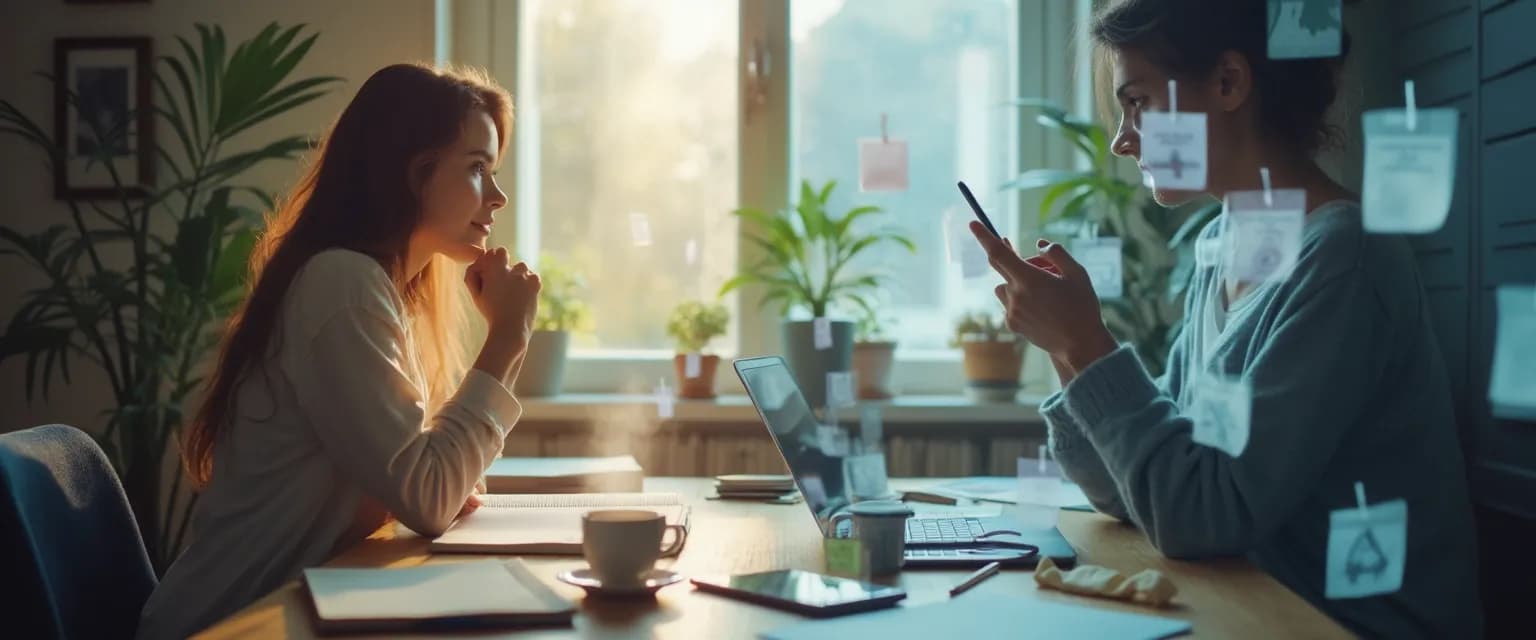Breaking Free from Procrastination During Creative Blocks: Pause vs Avoidance
Have you ever found yourself staring at a blank canvas or document, convinced you're just "letting ideas marinate" when really, you're scrolling through social media for the third hour? The line between taking a healthy creative pause and falling into procrastination during creative blocks can be frustratingly blurry. This distinction isn't just semantic—it's the difference between a productive creative process and a stalled one.
Procrastination during creative blocks often disguises itself as thoughtful contemplation. Your brain, faced with the anxiety of creation, cleverly redirects you toward easier, more immediately rewarding activities. Neuroscience shows us that both creative incubation and procrastination activate similar reward pathways, making them difficult to distinguish from the inside. Yet understanding this difference is crucial—when we mistake avoidance for incubation, we not only lose productive time but also feed a cycle of creative anxiety that makes future work even harder.
The cost of not distinguishing between these states extends beyond missed deadlines. Chronic procrastination during creative blocks gradually erodes our creative confidence, leading to diminished output quality and increased self-doubt. The good news? With the right awareness tools, you can quickly learn to tell when you're genuinely processing versus when you're simply avoiding.
Recognizing Procrastination During Creative Blocks: The Warning Signs
The emotional fingerprints of procrastination during creative blocks differ significantly from productive creative pauses. True incubation feels calm and contemplative—your mind wanders purposefully around your project even when you're not actively working. Procrastination, however, comes with a distinctive emotional cocktail: guilt, anxiety, and the nagging feeling that you should be working.
Emotional Indicators
When you're genuinely taking a productive pause, you'll notice a sense of curiosity and openness. In contrast, procrastination during creative blocks often brings feelings of shame, restlessness, or a need to justify your "break" to yourself or others. Pay attention to these emotional cues—they're your most reliable indicators.
Behavioral Patterns
Look for these telltale behaviors that signal procrastination during creative blocks:
- Repeatedly checking email or social media "just for a minute"
- Suddenly finding urgent interest in unrelated tasks
- Setting up elaborate "preparation rituals" before you can begin
- Waiting for the "perfect mood" or "inspiration" to strike
Self-Assessment Technique
Try this quick 3-minute check-in: Rate from 1-10 how much anxiety you feel about returning to your creative work right now. Then ask: "If I had to start working in the next five minutes, what specifically would I do first?" If you can't answer concretely or the thought creates immediate resistance, you're likely in procrastination territory, not taking a strategic pause.
Activities that often masquerade as "creative thinking" but are actually avoidance tactics include excessive research without application, reorganizing your workspace repeatedly, or consuming similar creative works without producing your own. These activities feel productive but rarely move your project forward.
Transforming Procrastination During Creative Blocks into Productive Pauses
The good news is that procrastination during creative blocks can be transformed into genuinely productive creative pauses with the right approach. Start with the 5-minute reset technique: set a timer for just five minutes and commit to working on your project for only that long. This tiny commitment bypasses your brain's resistance mechanisms, and once started, you'll often continue naturally.
Structuring intentional creative pauses makes all the difference. Instead of open-ended "thinking time," try scheduled incubation periods with specific start and end points. For example: "I'll take a 30-minute walk to consider solutions to my character's motivation problem, then return to writing." This approach honors your need for processing time while preventing infinite avoidance loops.
Environmental adjustments can dramatically reduce procrastination during creative blocks. Create separate physical or digital spaces for different types of work—a "deep work" environment with minimal distractions for production and a more relaxed space for genuine incubation. This spatial distinction helps your brain recognize which mode it should be in.
Finally, build accountability systems that acknowledge both needs. Partner with another creative for regular check-ins, not just on output but on process. Share both your production goals and your planned incubation periods, making both explicit and intentional.
Understanding the crucial difference between beneficial pauses and harmful procrastination during creative blocks empowers you to work with your creative rhythm rather than against it. By recognizing the warning signs and implementing these structured techniques, you'll transform what once felt like creative paralysis into a dynamic, productive process that honors both your need for incubation and your drive to create.




